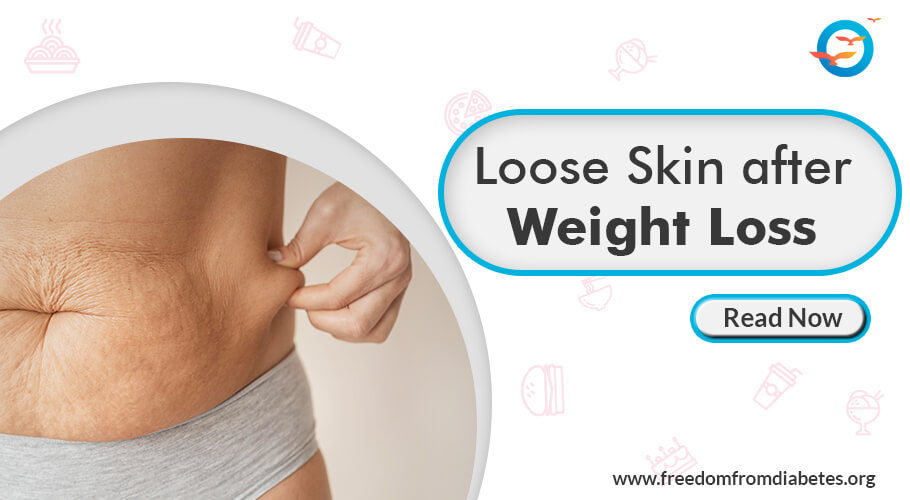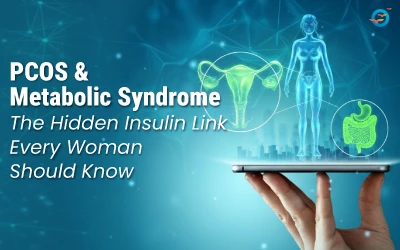Loose Skin After Weight Loss

Losing weight has many, many positive results, but all that vanished bulk does leave back one memory of its earlier presence: loose skin. This is an unexpected and undesirable consequence, but, as we shall see, there are several ways to address this problem. Let’s begin by understanding why this loose skin occurs, to begin with.
Why does weight loss cause loose skin?
The lowest layer of your dermis has a layer of collagen and elastin. Collagen is a type of protein that makes up the basic building blocks of your skin, as well as skin, hair muscles, and ligaments. Collagen, which comprises up to 80% of the skin’s structure keeps our skin from sagging, keeps it firm, and gives it a healthy, and youthful look. Elastin is another type of protein that also keeps the skin elastic and tight.
This elasticity allows the skin to stretch and expand without tearing in order to accommodate growth. However, if it is kept stretched for a prolonged period, the skin tends to lose elasticity and remain elongated. elasticity to the skin and helps keep it tight. Skin expands with weight gain and loses its ability to contract.
The natural process is also a contributing factor, as the body produces lower amounts of collagen and elastin. When one loses a lot of weight the extended skin remains elongated, creating the effect of loose skin. This is true whether the weight loss is due to diet and exercise or surgery; although, people who lose weight through surgery have less collagen and its composition is different too. The long one carries the excess weight, and the greater the weight loss, the bigger the problem. But beyond these aspects, there are other causes for loose skin.
Factors Contributing to Loss of Skin Elasticity
1. Age
Age is one of the primary causes of loose skin. As we age the body’s production of collagen and elastin reduces. This begins in our 20’s and 30’s itself. The quality of life that one leads also determines the extent of loose skin. Consistent use of high-quality moisturizing products, minimal exposure to the sun, plentiful hydration, can reduce or minimize skin sag as one grows older.
2. Length of time & Volume of weight lost
Picture a balloon blown up to its full capacity and then allowed to deflate. The more it is inflated, and the longer it is left in this condition, the greater will be its sagginess. Skin behaves in much the same way. If one puts on a large volume of weight for a long time, the collagen and elastin in the skin slowly break down and the skin loses its elasticity. Losing weight from this juncture will have the same effect as a deflated balloon—loose skin
3. Genetics
There is a genetic component to firmer skin too. For those lucky enough to have the right genetics, the collagen and elastin production doesn’t drop, and thus gives their skin a firm and supple look for much longer compared to the rest of us.
4. Pregnancy
During pregnancy, women naturally gain a lot of weight very quickly, and on delivery drop it just as quickly. Unhealthy diets can aggravate the effect, resulting in stretch marks and loose skin.
5. Smoking
Smoking is a primary cause of premature aging. Nicotine tends to narrow the capillaries that irrigate the dermis and provide nutrients to the skin. Sustained smoking thus disrupts blood supply to the skin. With restriction in supply of oxygen and nutrients, elastin and collagen production reduces, causing skin cells to die, and the skin to sag.
6. Sun exposure
Exposure to the sun’s rays has a similar effect as smoking and aging. UV-A & UV-B rays damage the skin’s structure causing premature cellular destruction. One effect is the breakdown of collagen and elastin proteins in the skin. This affects elasticity and causes skin to age and lose its suppleness.
Most Common Spots for Loose Skin
Collagen and elastin production are not equal throughout the body. Some spots are thus less susceptible to loose skin than others, although there is again a genetic component to this aspect. It’s no coincidence that the areas that tend to be affected most with loose skin are spots we are usually genetically predisposed to store fat.
Loose skin is most commonly found in the following areas:
1. Arms
Usually, triceps, creating flabbiness in the area, commonly described as batwing arms
2. Buttocks
Again, this is a spot where fat storage is most likely. Thus weight loss is more likely to create a loose skin problem here.
3. Face & Neck
Skin sag on the face is quite common, and one of the most visible signs of aging. Loss of fat here and reduced elastin and collagen in this part of the dermis is responsible for this effect.
4. Legs
Loss of degradation in collagen production due to either sudden weight loss or, more commonly, aging causes skin sag in the legs, usually in the upper thighs. Poor circulation can also result in sagging skin, due to a reduction in oxygenated blood and nutrient supply to this area.
5. Stomach
Since we tend to store the most fat around the midsection, this area is also the most vulnerable to loose skin caused by sudden weight loss.
Losing the Loose Skin-Naturally
1. Exercise
Loss of lean mass is a key factor in the appearance of loose skin. Thus exercise that increases or tones up your muscle mass are highly effective in minimizing the appearance of loose skin. Resistance training—be it with machines, free weights, or bodyweight—is a proven way to build muscle mass in young as well as older adults.
2. Firming products
There are many firming creams available in the market. The most effective ones use derivatives of Vitamin A, such as tretinoin, retinoic acid, and adapalene to improve the proliferation of skin cells. Some creams work by absorbing water molecules, which has the effect of smoothing out wrinkles and increasing the suppleness of the skin. However, it is best to consult a qualified medical professional before using any new product.
3. Massage
There’s nothing quite like a massage to soothe away all those aches and pains, and there’s a good reason for this. Massages increase the flow of blood to the muscles, improving oxygen & nutrient supply and keeping the effects of aging at bay.
4. Nutrients
Nutrients like protein, vitamin C, and omega-3 fatty acids are important to produce collagen and other components of healthy skin.
5. Water Intake
Consume daily water intake to keep your body and skin well hydrated.
6. Nonsurgical procedures
There are several non-surgical treatments to tighten loose skins, including chemical peels, laser peeling, ultrasound skin tightening, neuromodulators (Botox), and radiofrequency treatments, among others.
7. Weight loss:
Sounds counterintuitive, but often stubborn subcutaneous fat can give the skin a loose appearance. You can easily check for the presence of this subcutaneous fat by pinching the area. If there’re more than a few millimeters between your fingers, you know you have a problem. Losing this fat can make the problem go away
8. Quit Smoking:
Smoking dehydrates the body, and narrows the blood vessels of the skin, reducing the supply of oxygenated blood and nutrients. This has the same effect as prolonged sun exposure and premature aging. Kicking the butt can help stop and even reverse the damage to a significant extent
In a Nutshell
Loose skin can be frustrating. But don’t let this stop or hinder your weight loss efforts; because, there are many ways to deal with the problem. The chief culprit for loose skin is the loss of collagen and elastin protein, which contribute to the skin’s elasticity. Increasing the body’s production of collagen and elastin through creams, massages, exercise, stopping smoking, etc. has proven to be effective in reducing the problem of loose skin. You can also take pre-emptive action by avoiding smoking and alcohol, drinking sufficient water, moisturizing, staying away from direct sun, avoiding harsh skincare products, and eating a nutritious and healthy diet.
For more information on diet and exercises to keep your skin looking healthy and young, subscribe to FFD’s YouTube channel, Facebook page, and Instagram account. You will also find a plethora of helpful diabetes-friendly recipes and food guides on our blog at www.freedomfromdiabetes.org/blog
FAQ's
-
What causes loose skin after weight loss?
Loose skin occurs due to factors like rapid weight loss, loss of skin elasticity, age, and genetics, leading to the skin not adjusting to the new body shape. -
What are the best methods to tighten loose skin?
Effective methods include strength training exercises, maintaining hydration, using skin-firming creams, and considering cosmetic procedures if necessary. -
Can diet and hydration help with loose skin?
Yes, a balanced diet rich in vitamins and minerals, along with proper hydration, can support skin elasticity and overall skin health after weight loss.

